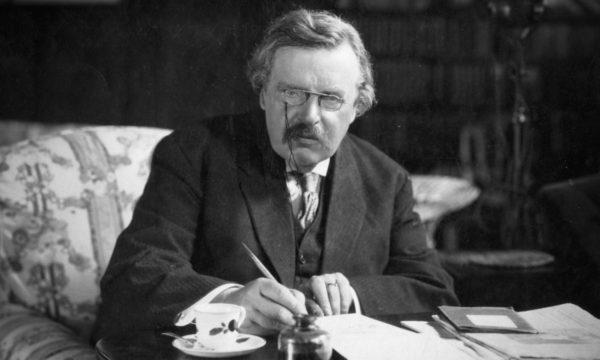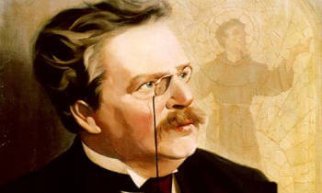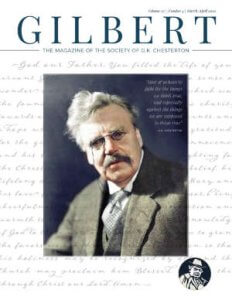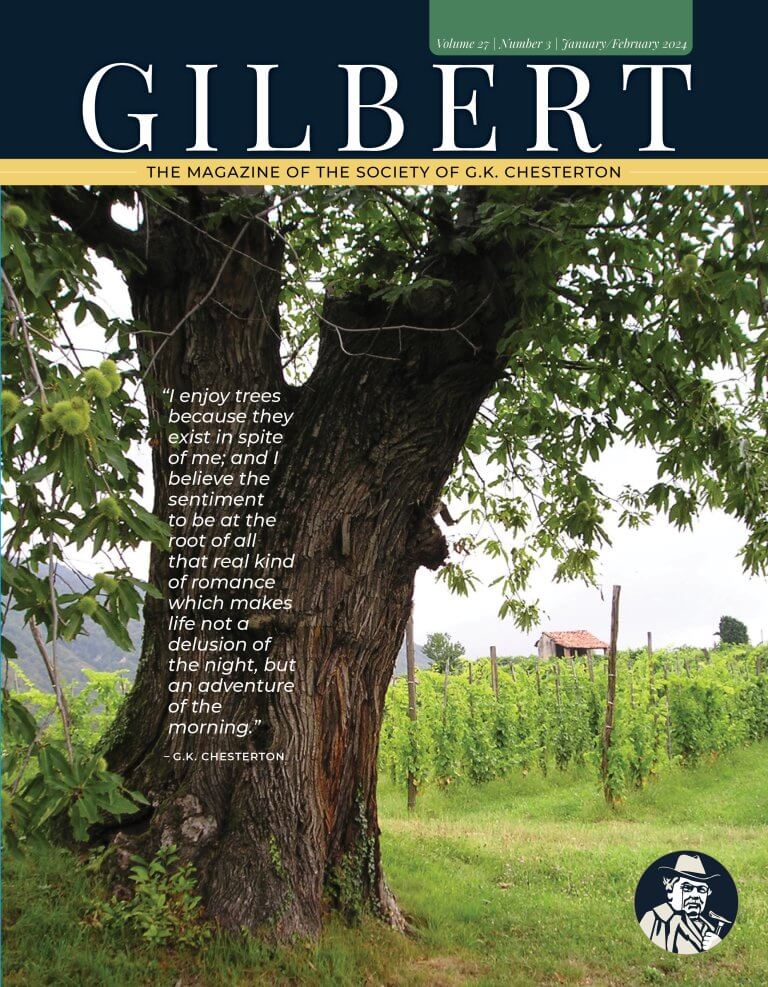Writing of what he called “the thrilling romance of orthodoxy,” Chesterton observes: “People have fallen into a foolish habit of speaking of orthodoxy as something heavy, humdrum, and safe. There never was anything so perilous or so exciting as orthodoxy.”
He goes on to relate how the historic Christian Church was in every age beset with heresies on every side, and doggedly ran Her mad course between them – not always elegantly, it may be admitted, but nonetheless indefatigably. “She swerved to left and right, so exactly as to avoid enormous obstacles.”
His wrapping up of the account of this great adventure is such a stirring bit of prose that it is worth quoting at length:
It is easy to be a madman: it is easy to be a heretic. It is always easy to let the age have its head; the difficult thing is to keep one’s own. It is always easy to be a modernist; as it is easy to be a snob. To have fallen into any of those open traps of error and exaggeration which fashion after fashion and sect after sect set along the historic path of Christendom – that would indeed have been simple. It is always simple to fall; there are an infinity of angles at which one falls, only one at which one stands. To have fallen into any one of the fads from Gnosticism to Christian Science would indeed have been obvious and tame. But to have avoided them all has been one whirling adventure; and in my vision the heavenly chariot flies thundering through the ages, the dull heresies sprawling and prostrate, the wild truth reeling but erect.
If one imaginatively enters into the metaphor, it needs hardly be noted that riding along on such a conveyance amidst such a journey must sometimes be quite uncomfortable; and so it has been; and so it is. Whether it be when “the whole world groaned in astonishment to find itself Arian,” or when the Papacy fell captive to the factious worldly interests of the Babylon called Avignon; or when hosts of clergy, theologians, and laity united their voices together in protest favoring “the Pill” over the Pope, there has been no shortage of times during which the task of keeping one’s head has been at least as difficult in the Church as without.
When last December the Vatican’s Dicastery for the Doctrine of the Faith (DDF) released, with the Holy Father’s approbation, its declaration, Fiducia supplicans – on “the Pastoral Meaning of Blessings” and, more specifically, the question of whether ministers in the Church could bless those in same-sex relationships or other “irregular situations” – these quotations from Chesterton rose up in my mind. Had I lived to see the day that the chariot finally wobbled too far and ended its ages-long journey? No, that didn’t seem likely. What, then? Well, at the very least I was sure that here was an instance of the “wild truth,” however finally “erect,” very visibly in the moment “reeling,” and I wasn’t the only one who’d noticed.
“Pope says priests can bless same-sex unions,” ran the headline in the Associated Press, and this was perhaps not the most egregious. Father James Martin, notorious for his misleading presentation of the Church’s perennial teachings around the Sixth Commandment, made great hay with an asinine photo op for the New York Times, inviting two men of his acquaintance to pose for a blessing, in clear and direct contradiction to what the document actually allows (i.e. “spontaneous” blessings, carefully arranged to prevent public scandal). Yet I wouldn’t be holding my breath for Martin to face censure for his actions.
A careful study of the declaration itself, and consultation with reliable theological commentators, assured me that there wasn’t anything blatantly heretical or problematic in the pastoral provisions set forth therein. But that it was an ill-judged missive bound to cause pain and confusion – not to mention leaving open the door to myriad abuses and liberties – seemed an unavoidable conclusion. Like so many others, I was frustrated, at risk of becoming despondent, struggling with impulses toward uncharitable sniping or grousing.
I turned to Chesterton, and found comfort. “At least five times,” he writes in The Everlasting Man, “with the Arian and the Albigensian, with the Humanist sceptic, after Voltaire and after Darwin, the Faith has to all appearance gone to the dogs. In each of these five cases it was the dog that died.” At least five times. I could certainly think of more to add to the count. But each only adds to the argument, a fortiori. The more numerous Her sons’ defections, the more surely shone the Mother’s indefectibility. Chesterton cannot help but notice such a paradoxical pattern. In Her members’ many weaknesses, the Church is ultimately made strong.
Through so many perils, from Pelagius to the Pill, the Church had passed intact, bruised and battered like Her Bridegroom though She may appear. And even the simplest among the Saints and Doctors knew to expect nothing else, for Christ warned us it would be so: “Remember the word that I said to you, ‘A servant is not greater than his master.’ If they persecuted me, they will persecute you” (Jn. 15:20). Yet He had also promised, and proved, that the story doesn’t end at the Cross. As Chesterton sagely writes, “Christendom has had a series of revolutions and in each one of them Christianity has died. Christianity has died many times and risen again; for it had a god who knew the way out of the grave.”
With the gift of hindsight, it is easy to take too much for granted. When we think of Chesterton’s remarkable journey to the Faith over so many years, culminating in his final reception in 1922, one part of the narrative we pass over too facilely is this: the very fact that there was any Church there to receive him! One need only cursorily consider the history of the preceding four centuries to realize that this was by no means an inevitable circumstance. If one imagines oneself in the place of a peasant amidst the so-called “Glorious Revolution” of 1688, looking ahead to the future, England would not seem likely ever to be an apt setting for the biographies of men like Newman and Chesterton. No, only with the eyes of faith could such be foreseen, and hardly!
That the Church should be there to welcome Chesterton when he was ready to step over the threshold was neither more nor less than a miracle. And yet, as miracles go, this particular one – the uncanny stubbornness of the Faith to outlive epochs and empires – is one of the commonest in Church history, seen everywhere from Tepeyac to Tokyo.
We needn’t always be comfortable in our perilous perch in the giddy chariot that is the Church. From time to time, we may be bewildered, experience whiplash or worse jolts, when those at the reins seem to take a turn too fast or fail in avoiding a pothole. The charism of infallibility pertains to the chariot, in the end, not to the driver: we are assured that the wheels won’t come off, that the Thing will never turn over into a ditch. We are not assured of a smooth ride.
For my part, I decided to leave the commentators to their discussions of doctrine and to the pastors of the Church the thorny figuring out of how to implement this controversial instruction in our confusing times. Better for me to focus on what I had to do, to keep doing my small part in the vineyard to bring in the Lord’s harvest. What else could one do? I would keep my head. Buckle down in my seat. Trust the surety of the steed. And hold on for dear life: because, whether I liked it or not, I was sure at any rate that this wouldn’t be the last bump along my road. “There never was anything so perilous or so exciting as orthodoxy.”
ABOUT JOE GRABOWSKI
Joe Grabowski is Vice-President of The Society of Gilbert Keith Chesterton, a worldwide lay apostolate dedicated to Catholic education, evangelization, and the social teaching of the church.






